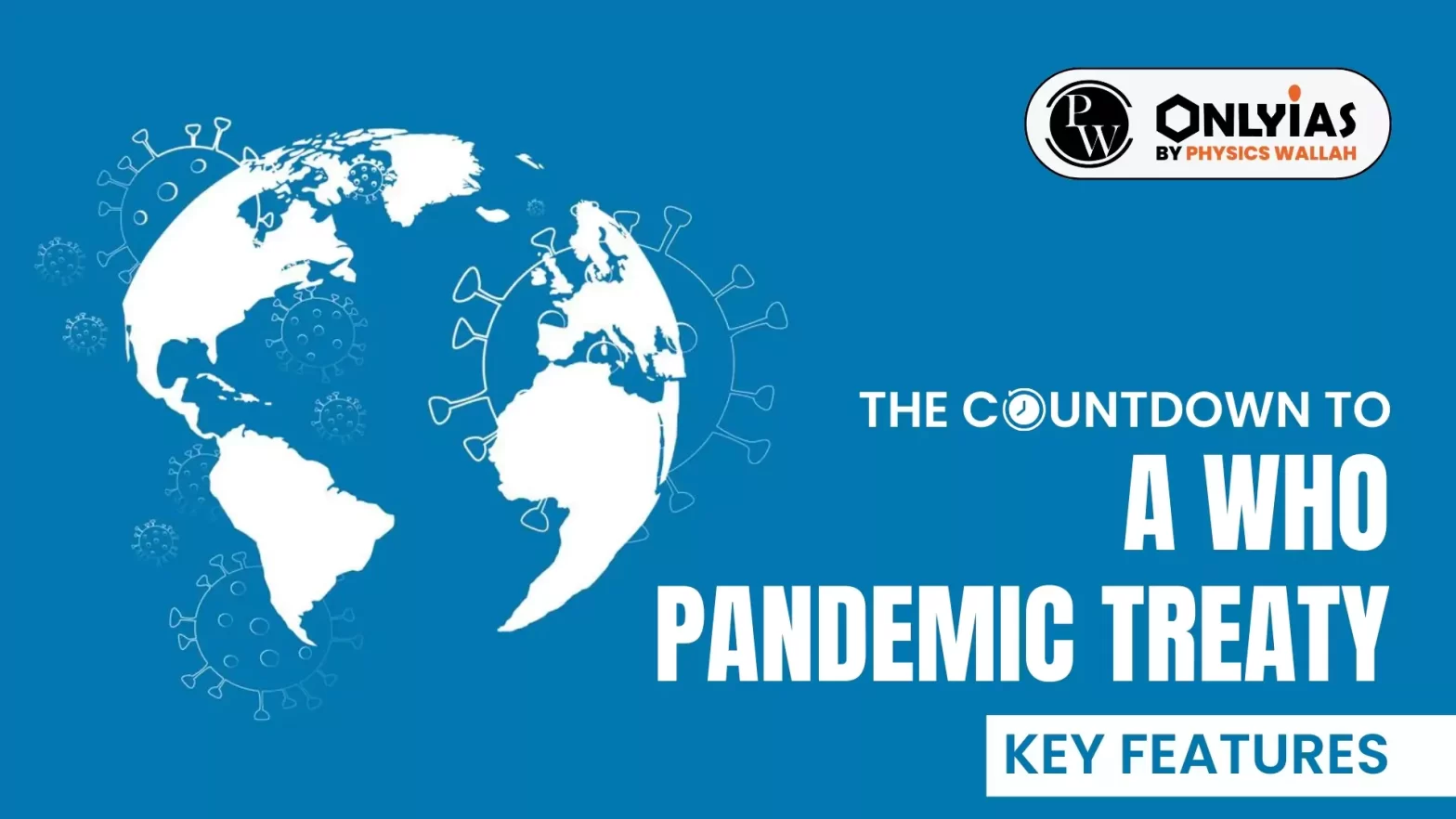
The ninth session of the Intergovernmental Negotiating Body (INB), marking the concluding phase of discussions for the World Health Organization Pandemic Agreement, began recently.
| Relevancy for Prelims: World Health Organization (WHO), Global Initiative On Digital Health (GIDH), Global TB Report 2023 and, CoViNet- A Global Laboratory To Monitor.
Relevancy for Mains: WHO Pandemic Treaty: Key Features, Concerns, and Way Forward. |
|---|
The WHO Pandemic treaty/ agreement represents a critical step towards rebuilding trust and coordination between nations, acknowledging that no single Government or institution can confront the threat of future pandemics in isolation.
| Prelims PYQ (2021):
With reference to recent developments regarding ‘Recombinant Vector Vaccine’, consider the following statements: 1. Genetic engineering is applied in the development of these vaccines. 2. Bacteria and viruses are used as vectors. Which of the statements given above is/are correct? (a) 1 only (b) 2 only (c) Both 1 and 2 (d) Neither 1 nor 2 Ans: (c) |
|---|
| Must Read | |
| NCERT Notes For UPSC | UPSC Daily Current Affairs |
| UPSC Blogs | UPSC Daily Editorials |
| Daily Current Affairs Quiz | Daily Main Answer Writing |
| UPSC Mains Previous Year Papers | UPSC Test Series 2024 |
To get PDF version, Please click on "Print PDF" button.
How Clean Energy Needs, New Tech Shape Mineral Gov...
Stepping Stone: On Shubhanshu Shukla, NASA-Axiom-I...
How is Global Shipping trying to Decarbonise?
Contesting the Future of Forest Governance
A Tectonic Shift in Thinking to Build Seismic Resi...
Safe Havens No More: On Growing Crime Against Wome...
Monsoon Session of Parliament 2025: 21 Sittings, 8...
Language, Culture, and Identity in India
Indian Army Tests Akash Prime in Ladakh, Boosting ...
Banni Grasslands in Gujarat Ready to Host Cheetahs...
CWC Warns NGT: 34 Glacial Lakes in India Expanding...
Coronal Mass Ejections (CMEs) Trigger Rare Norther...

<div class="new-fform">
</div>